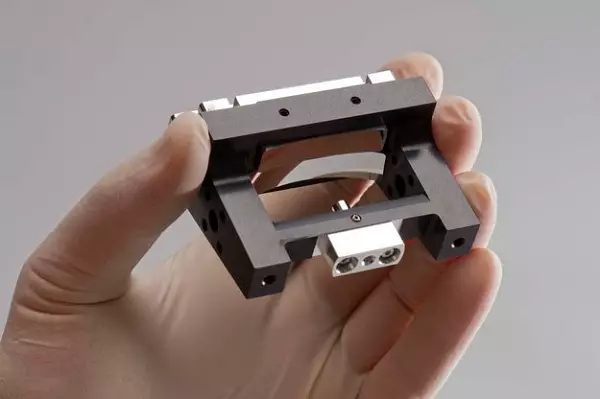
The tiny satellites called CubeSats we wrote about some time ago seem to be getting better and better all the time. At the time it seemed like a neat way to make simple satellites cheaper. However these tiny satellites might just be the future for satellites. They are easier and cheaper to make and send up, they use mainstream parts, they use less energy and they pose virtually no risk of hitting the ground at atmospheric re-entry. And now they are getting a lot more advanced.
This palm-sized ‘three-mirror anastigmat’ design previously devised for Proba-V, with a trio of precisely curved aluminium mirrors is designed to enable hyperspectral imaging, even from a CubeSat-sized satellite.
Hyperspectral imaging, like other spectral imaging, collects and processes information from across the electromagnetic spectrum. Such as the human eye sees visible light in three bands (red, green, and blue), spectral imaging divides the spectrum into many more bands. This technique of dividing images into bands can be extended beyond the visible. So you can tell what things are made of just by the light they are reflecting, providing valuable data for fields such as mineralogy, agricultural forecasting and environmental monitoring.

Hyperspectral image ‘data cube’
ESA is now working on a hyperspectral instrument to be carried inside the CubeSat standard, meaning a 10 cm cube – a litre – weighing no more than 1.33 kg.
CubeSat
“We see this as working like a ‘little brother’ to full-sized hyperspectral imagers,” explains ESA’s Alessandro Zuccaro Marchi, overseeing the project.
“It won’t replace them, possessing lower spectral resolution and signal-to-noise ratio, but it could do some useful complementary work as a low-cost instrument of opportunity, added to standard satellite payloads or flown on its own aboard CubeSats.
The optics are based around a compact trio of precisely curved aluminium mirrors. Larger ‘Three Mirror Anastigmat’ telescopes are well known and already widely used for space applications.
“One of the advantages of this design is that none of the mirrors sits in front of the others, so there is no obscuring of light,” says Alessandro. “Furthermore, it is possible to obtain a wide field of view while maintaining an acceptable image quality.
“For this project, a 50° field of view coupled with good spatial resolution across hundreds of spectral bands means it would offer a useful overview or early warning capability, for potential follow-up by a larger instrument to acquire more detail.”
The major advance that allows shrinking these optics into a palm-sized design is the ‘single diamond point turning’ manufacturing technique.
“This already precise technique was improved and employed to mill the aluminium mirrors down to an accuracy of a few nanometres, a millionth of a millimetre,” adds Alessandro.
To prove the technological feasibility, a prototype engineering model of the instrument’s telescope was built by Dutch company VDL ETG under ESA contract.
“The result was a sufficiently good optical quality that also has potential to be applied for hyperspectral imaging,” adds Alessandro.
“So our plan from here is to push the envelope and shrink the design even further. Together with the prototyping of novel data compression algorithms, this system has the potential to become very attractive.”
This next telescope will fit inside a single CubeSat unit, together with its electronics, a ‘disperser’ to split the light into wavelengths, plus electronic detectors, while the platform overseeing the satellite would be housed inside the other two units.









Recent Comments
(Latest Update 08-18)[…] Parker Warner Wright Releases a New Creepy Puzzle Video 2019 (Latest Update 08-18) […